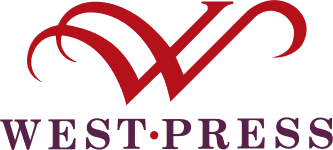Marketing tactics, like people (and customers for that matter), can be fickle. People respond emotionally. Each person responds differently and they have unique prejudices, perceptions and experiences. Unfortunately, marketing is not an exact science. There’s no guarantee that every idea, or campaign, will work. Luckily, there are ways to measure and review your campaign’s performance and either keep on a successful path or change things up if there are poor results. Below we outline some metrics to use for Email Marketing, Landing Pages and Websites.
Email Marketing
Many email marketing programs come already outfitted with helpful tools to evaluate your marketing metrics. Here are a few that you need to focus on:
- Open Rate: The first hurdle in an effective email campaign is getting your email opened. The most effective way to accomplish this is with an eye-catching subject line. You have about 20 seconds of your customer’s attention to convince them to open and read your newsletter. Make each word count! Let them know what to expect and why they should be interested. Secondly, make sure your email database is up-to-date. You want to make sure your hard work is getting into the right hands.
- Click-through rate: Here’s where quality and value of your content really factors in. You’ve captured their interest with a great subject line – now what are you going to do with them? You need a call to action, meaning you want your readership to have a specific response when they are reading your newsletter. You need to convince them to do something, whether it’s visit a specific landing page, read your latest blog article or liking your company on Facebook.
Landing Pages
Landing pages try to persuade visitors to register for and download content that will hopefully lead to a sale at some point in the future.
Two landing page metrics – Visitor-to-Lead Conversion Percentage and Visitor-to-Customer Conversion Percentage – will show you if your offer is grabbing your reader’s attention enough to prompt them to act upon it.
Here are three steps to increase your website Visitor-to-Lead Conversion Percentage:
- Does your landing page focus on solving a customer problem? Customers want to know if you have the service/solution that they are looking for. Having great testimonials and a mission statement is good but customers are in search of answers. If they think your company (and your website) can provide them with that solution, they will feel like they’ve found the right place.
- Make sure your call to action is clear and direct. Identify with your customer by highlighting a problem your company can solve. Talk about the solution that your company offers and tell the customer what to do next to get their problem resolved.
- Is your contact information easily available? So you’ve attracted the customer with a solution to their problem and they’re eager to contact you. Don’t make them hunt for your contact information. Provide them with a phone number and email address (just make sure it’s one that is frequently checked) to contact your business. Consider also having a form on your website for the customer to fill out for you to contact them.
When it comes to Visitor-to-Customer Conversion Percentage, here are a few tips to follow:
- Provide easy access to customer service. Make sure your phone number is available on every page of your website.
- Offer a toll-free number
- Offer multiple payment options to attract more buyers
- Make your site secure
- Solicit and welcome feedback
Websites
Here are six metrics to focus on in regard to your website:
- Unique Visitors: The number of individuals who visit your website – or unique visitors – is the best indication of your site’s overall traffic.
- Page Views: The cumulative number of individual pages that your visitors click on during a given period of time is what page views are. A good sign is a page view number higher than your unique visitors. This means your content is engaging and readers are visiting multiple pages.
- Search Engine Traffic: If you’re doing a good job of optimizing your content, then you should be seeing a steady stream of traffic coming to your site through various search engines.
- Bounce Rate: Anything less than a bounce rate (visitors who come to your site then immediately leave) of 40 percent is good. If yours is higher, it’s an indication that you may need to revisit your content.
- Conversion Rate: The percentage of visitors to your site who take a specific action, such as requesting a white paper. A two to three percent conversion rate is considered the average.
- Inbound Links: Also known as backlinks, inbound links are incoming links to a website page. As it pertains to search engine optimization (SEO), the number of inbound links is one indication of a website’s or page’s popularity. The more high-quality inbound links you have, the higher your content will rank on search engines.
West Press’ talented staff is here to help you with all of your marketing needs. Contact West Press or your Account Executive at 520-624-4939 today.

